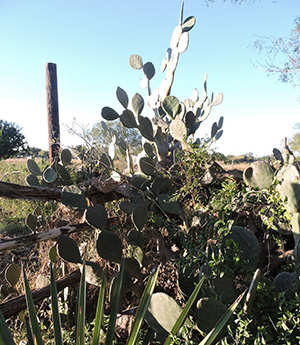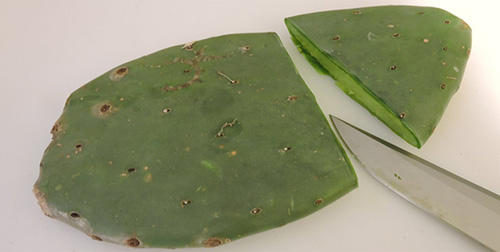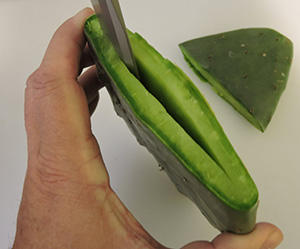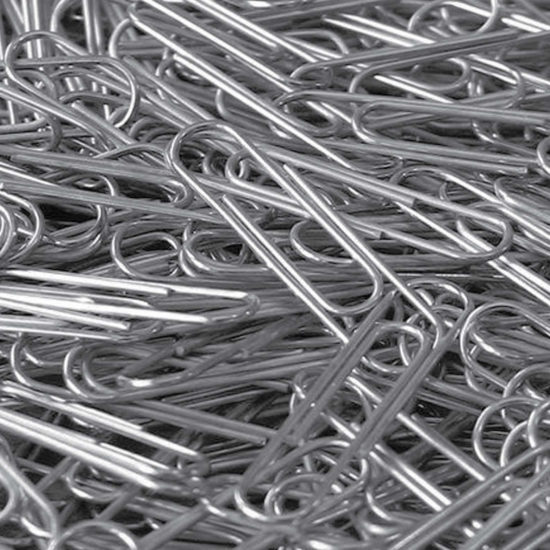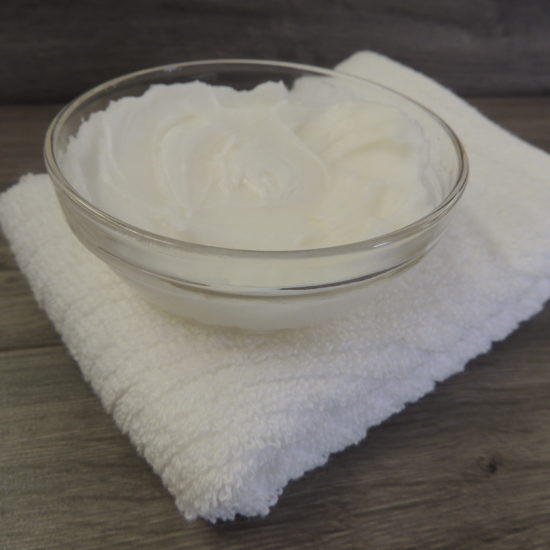
We all know how important it is to keep abundant food on hand to get us through a crisis. Stockpiling food is usually the first thing any of us do as preppers – and this is something we continue to do even after many of our other plans are in place. But having food and having a way to cook it, are two different things. Much of that food will be worthless without the ability to cook it.
We’ve all cookware in our homes, of course, as well as barbecue grills, fire pits, and other places to cook. But what if we get to bug it out? I carry in my bug-out bag a complete set of backpacking cookware, but I see a lot of lists that don’t include that. Rather, it seems like there’s a lot of people around who think a few bits of aluminum foil is all the cookware they’ll need.
Well, I cooked in foil made of aluminum. It does work. At least, the first few times, it works. Then the foil gets ruined and there’s nothing you need to cook in that delicious ramen box. So what would you do then?
One option is to make a cup out of birch bark and cook in it. Of course, that presumes you are in a part of the land where birch trees are growing. If you’re not – say, for instance, you‘re in the Southwest, then that won’t work. You’ll need another option, a cooking option like in a cactus.
The prickly pear is among the most common cacti around. I’m not sure how many different prickly pear varieties there are, but just 18 of them grow in the Sonora Desert. Many varieties provide the fruit of the tuna and others are consumed in Mexico as a vegetable, known as “nopal” although not popular in the United States, nopal has been widely recognized by the health food industry for its many excellent properties.
Because the prickly pear is edible, there is no problem using it to heat water for coffee making or cooking your ramen pack. For that matter, you can scoop out the inside of the pad once you cook it, and eat it as well. Though it may not taste like your favorite vegetable, it will give you some nutrition.
Prickly pear leaves or “pads” come in various sizes, depending on the type of prickly pear plant in question. Most have spines, but there are a few varieties, the nopal in particular, which do not. I was lucky enough to find one that only had small spines to use for my experimentation with this method.
Preparing the Cactus
You’ll need to use one major prickly pear pad as a cooking vessel. Make sure it’s an unblemished pad, no scars, and especially no holes inside. There is no real way to patch any holes, so if you harvest one with holes or put any holes in it, you are going to have to start over in the process of preparing it.
You can cut the pad at the joint, where it connects to the next pad, but if you do that, you will have to cut the pad again to make the opening for the top of your cooking pot. Only cutting across the pad works better, where it gets close to its full width, providing you with the gap.
Singe the spines is the next thing you want to do, so they don’t stick you. Be especially careful to singe the smaller spines; as they are usually sharper and harder to see and remove. You are probably not going to be able to burn off the bigger spines all the way, without running the risk of putting a hole in the surface. But if you can singe off the point at least, it can’t stick you.
When you cut the pad off at the joint instead of cutting a corner, you’ll now have to cut it off, leaving the gap at the top of your cooking vessel. Then you’ll have to put your knife down carefully in the middle of the pad, build a gap for it to open. Putting the knife’s point through the side of the pad at this point is extremely easy, making it useless and forcing you to start over, so you have to be extremely careful; cutting a little at a time.
The pad will be stiff, so it won’t be easy to open it up and make a vessel out of it; but if you wedge it in a stick’s fork, you can slightly push it to open. This will also allow you to hold a stand upright as you cook inside the pad.
Cooking Your Ramen
With the cactus pad now prepared, you are ready to start cooking. Ramen are cooked in boiling water, so the idea is to fill the cactus pad with water and then to get that water boiling.
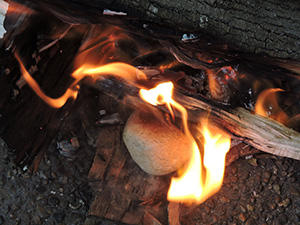
If we were to work with that birch bark cup, we could put it over the fire. As long as the flames in the cup do not reach higher than the water level, it is not going to burn. I’m not sure if the prickly pear pad will work the same way since I’ve never tried it. Rather than doing that, we should place hot rocks inside the water to heat it up.
This naturally needs a fire, which is the first thing we should have done before we hunted our cactus leaf. There’s no need for a bigger fire, but it needs to produce some good coals because the coals are the fire’s hottest part. We’ll have to place some tiny ones, ideally smooth, rocks to heat them in those coals.
It’s important to use stones that have no cracks or fissures inside them. If they do, there’s going to be a chance in those cracks to have water. When heated, that water will spread and could cause the rock to break or even explode, dispersing pieces all over the place. Better not to use stones with cracks inside them. The stones you pick from a stream bed are fine, just as long as you search for cracks on them.
A few sticks can be used as “pinchers” to pick up the rocks from the fire and place them in the cactus pad to heat the water and bring it to a boil. You’ll probably only be able to use one rock at a time, enabling the heat to be transferred to the cactus water. Once it has transferred, remove it (after 20 to 30 seconds) and replace it with another stone. Repeat until the water gets boiling.
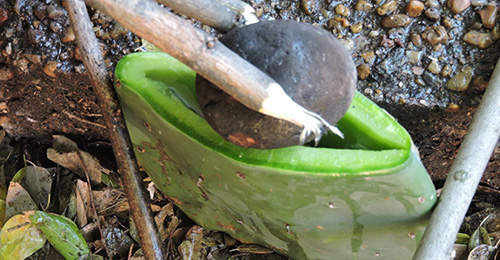
At this point, you’ll be glad you’ve got a couple of sticks holding up your cactus pad, as the boiling water inside it will make the pad hot and hard to hold.
With the water boiling, you can now break your ramen and put it and the seasonings in the cactus pad to cook. You will probably only be able to fit about half a pack at a time, but you can always reheat the water to cook the rest. Ramen cooks fast, so after putting it in the water, you’ll be able to eat it within a few minutes.
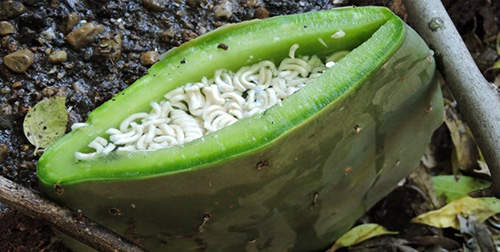
If you add any dry ingredients, such as dried vegetables or chopped jerky to your ramen, turn it into a heartier soup, be sure to add them before the ramen, as they will need more time to soften in the hot water. Even so, these additional ingredients can be a little chew, but they’ll at least be edible.
Talking of being edible, if you don’t have a fork or spork in your survival gear, you can also use the time while waiting for the boiling water to whittle a pair of chopsticks for yourself. That is the way to eat ramen anyway, isn’t it?


